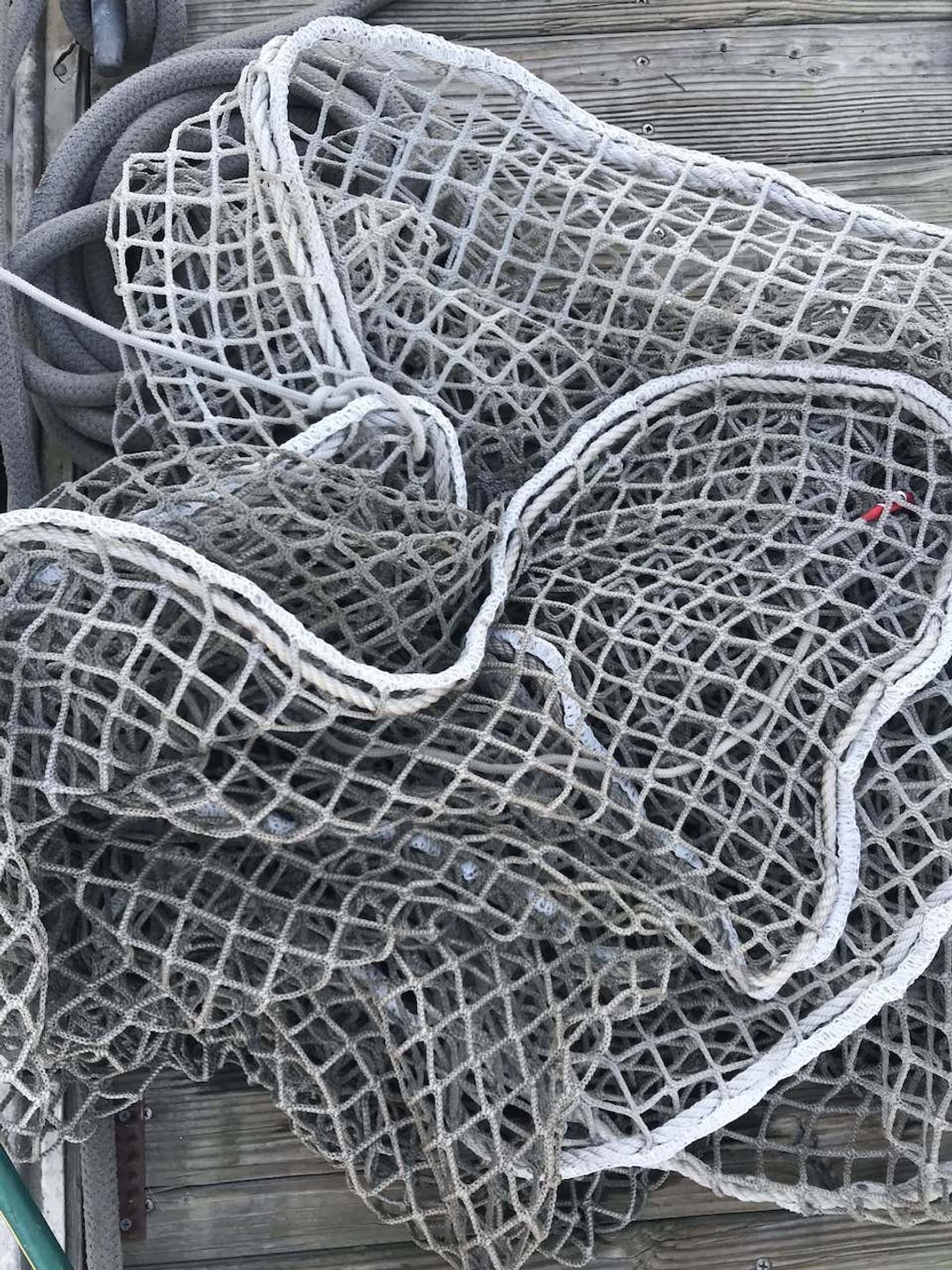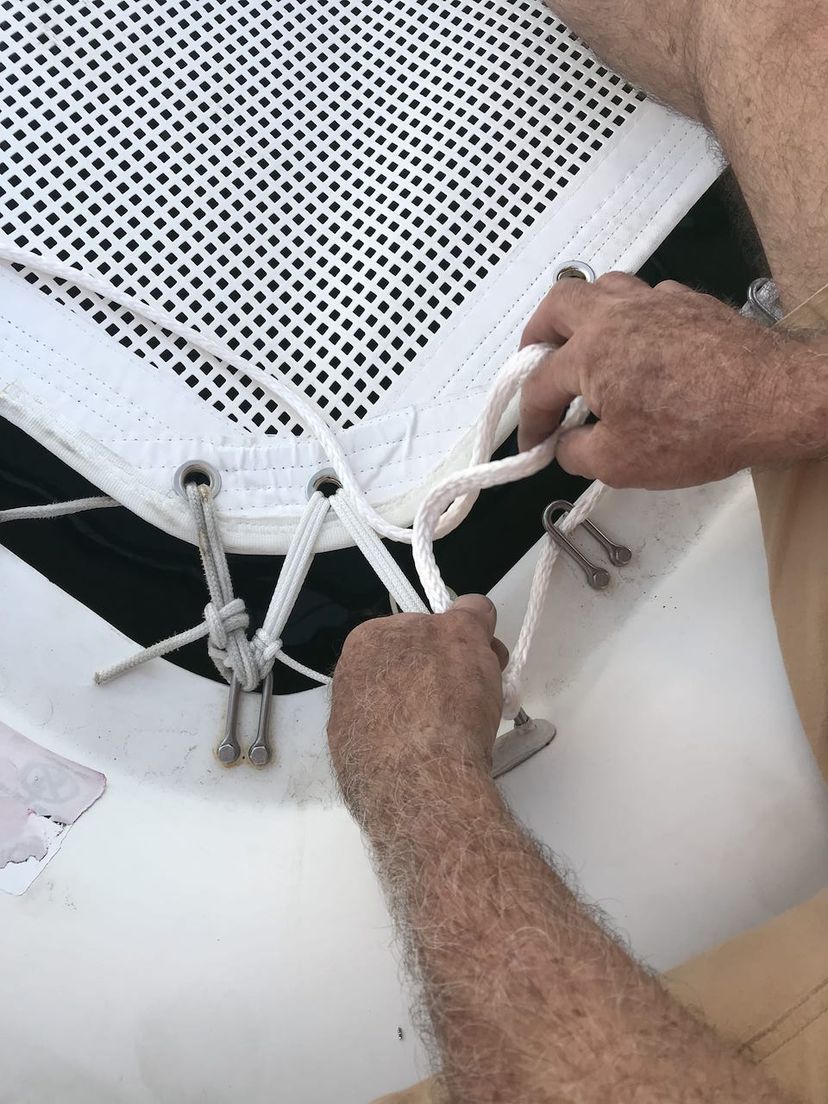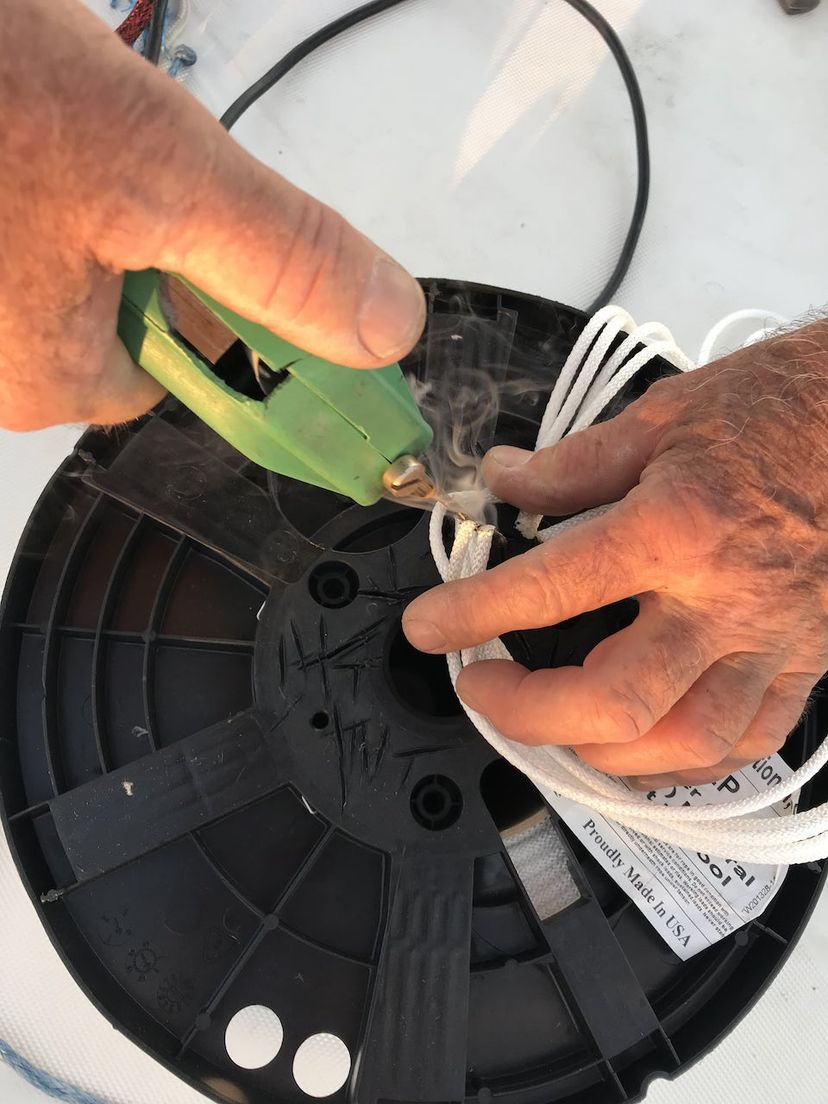Etienne: The owner is planning a long navigation and replacing the net is part of the boat prep for him. The net doesn’t look bad you’re right, but it is over 6 years old, the boat sailed from France to the Caribbean, and stayed there for quite a few seasons before sailing over to Los Angeles. A net in 30mm polyester which is what's installed at the factory typically needs to be inspected and possibly changed after 5 to 8 years so this is the right timing for this maintenance.
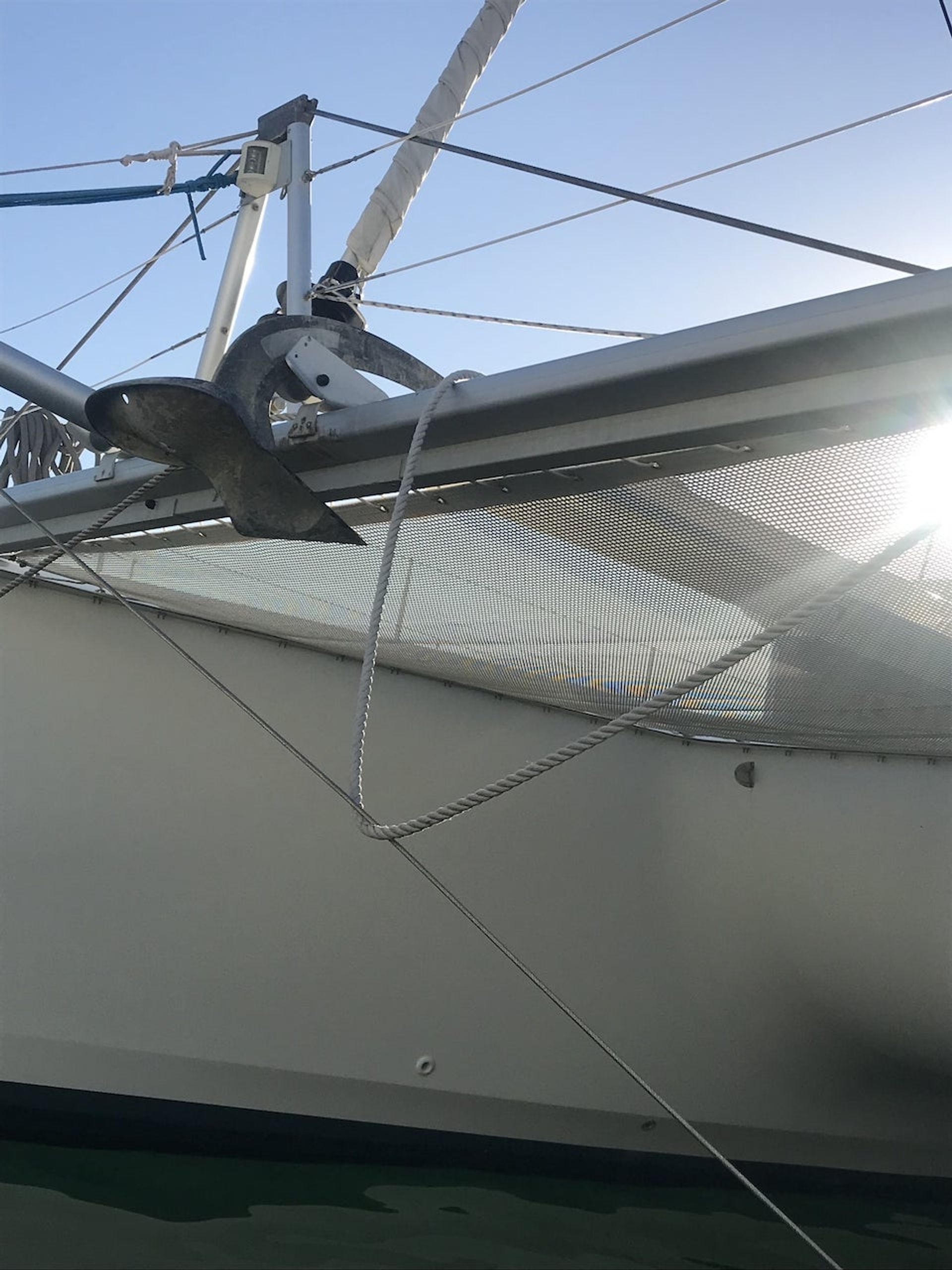
I am replacing the original net with a Supertramp net, per the owner’s request. We can use 3 different types of material for the nets:
- 30mm Polyester: this is typically the original net installed at the factory, it offers a very good compromise between comfort and longevity. It sheds water quickly, so it is the best on a long passage. It comes in white or black and the black color will last longer.
- 13mm Polyamide: this net has smaller holes, is smoother and softer when walking on it. The downside is a shorter longevity, 3 to 5 years max, which is why it is a good idea to get it in black which will last longer as it has better protection from the UV.
- Supertramp: this is a polyester mesh infused with vinyl. This net has small holes and is very long lasting (10 years +), it is very comfortable but it doesn't have the bouncy trampoline feeling as it doesn’t stretch. Supertramp nets only come in white.
The choice really depends on the owners, there is no difference in the way the boat sails with any of these nets, water will still go through and drain down. The black nets are impressive because visually they fade in the water in a way, and they become almost invisible.
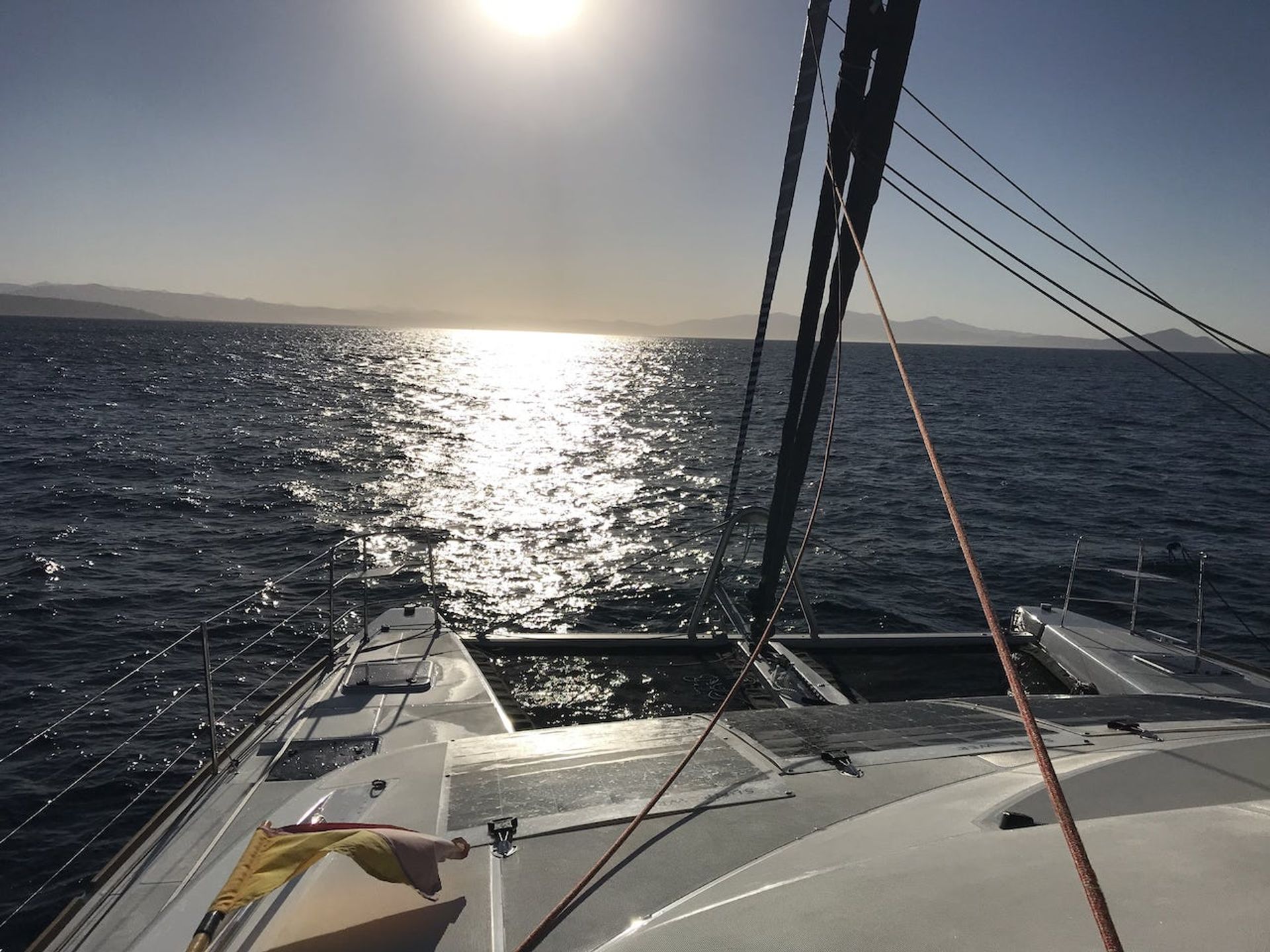
Question: What kind of maintenance should we plan for each of these nets?
Etienne: Maintenance is essential to keep any net in good shape and safe, don’t forget that in addition to lounging on the front of the boat at sunset, the crew and skipper might need to walk on the net to access the front of the boat, so keeping the net in good shape is a real safety issue. The best maintenance for the Polyester and Polyamide nets is to stay away from soap and scrubbing as it will degrade the fibers. A good rinse with freshwater after a daysail or a passage is the best maintenance. Supertramp nets are much easier to maintain, you can scrub all you want, it doesn't fear anything.
Question: How did you become the net expert?
Etienne: Since my first foray in sailing and boats I have always been fascinated with the "bosco" position, the rope master on any vessel; he takes care of the mooring rope / hawsers, the anchoring system, and all sorts of tying apparatus that goes along with boats, towing and fastening.. to this day, a book on knots is a very pretty and mysterious affair, coming from ancient times, with style and purpose…
To install a polyester net is physically difficult, as you have to stretch the net to fit it to the boat: a polyester net is manufactured 10% smaller than the hole it fills, so it is a long, strenuous and tedious job to do: you'll need gloves, patience, as the net will gradually stretch, and a good knowledge of knots and rope handling, which seems to be a dying art...
I do enjoy the exercise, pulling and huffing, and the finished product is satisfying for the customer and the installer. Lately, the growth in our sailing industry is mostly in catamarans, which require care, maintenance and expertise which I am happy to supply.
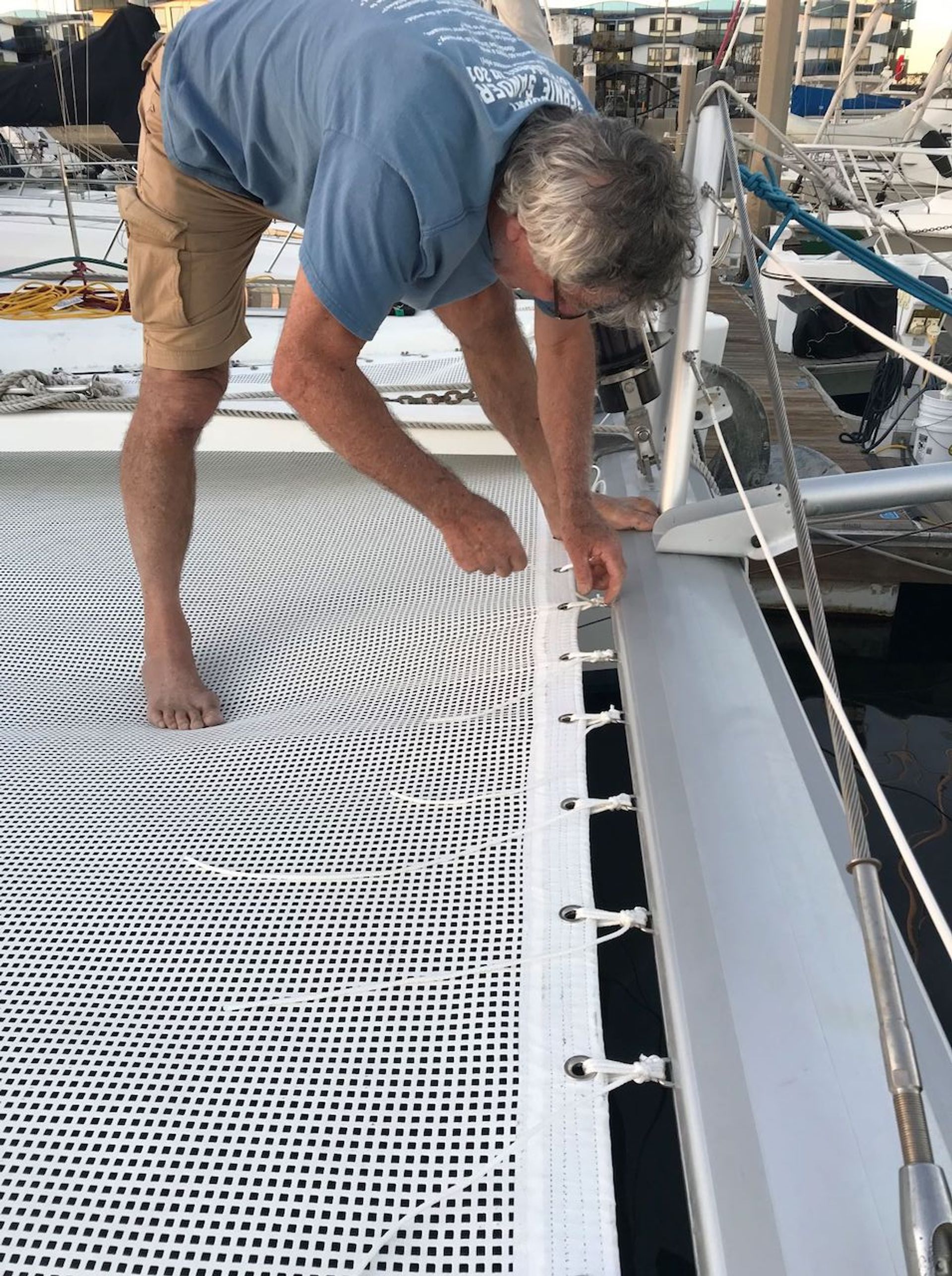
Question: how long does it take you to change a net, how hard is it to do it on our own? / would you recommend owners to do it themselves?
Etienne: It takes me about 5 hours per boat, first I cut the fasteners holding the old net off, leaving the old net under the new net to allow walking, once the corners of the new net are in place, then, one by one, independent lashing which acts as purchase, I slowly progress on bringing the new net closer to the edge of the boat, eventually releasing the old net all the way. It is a good idea to wet the net as it helps stretching. I have all the Lagoon boat templates in my shop and make nets to order based on each boat so there is very rarely any bad surprises in the measurements of the new net. I thread polyester covered rope 6mm through the mounts on the boat and on the net and the hardest part really is to tighten that. I do it by hand obviously, and as I want my job to be clean, tidy and secure I spend quite a bit of time pulling each section, and checking it.
Any owner with interest in knots and capable of physical activity should welcome installing the net, as it is a rewarding, if difficult, activity. But all too often, new owners, while intrigued by the job, realize that it is better left to professionals, or at least sailors with some experience in knotting and rope pulling. It is not such a complicated job, but it takes effort, patience and expertise.
